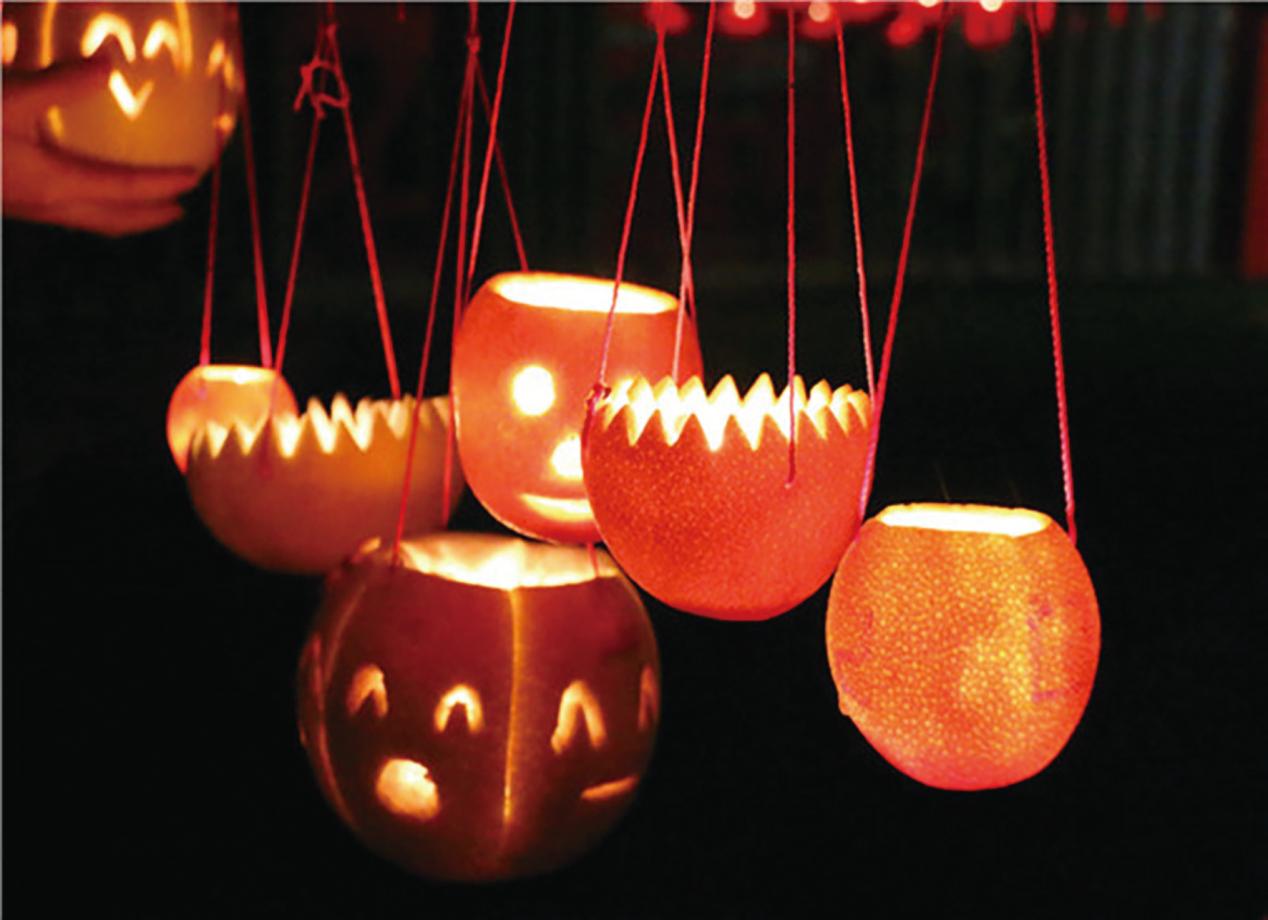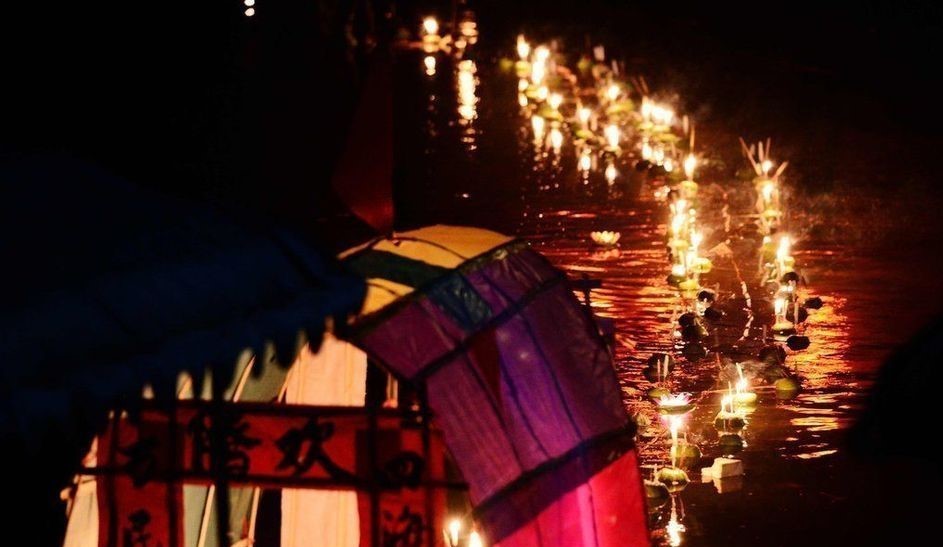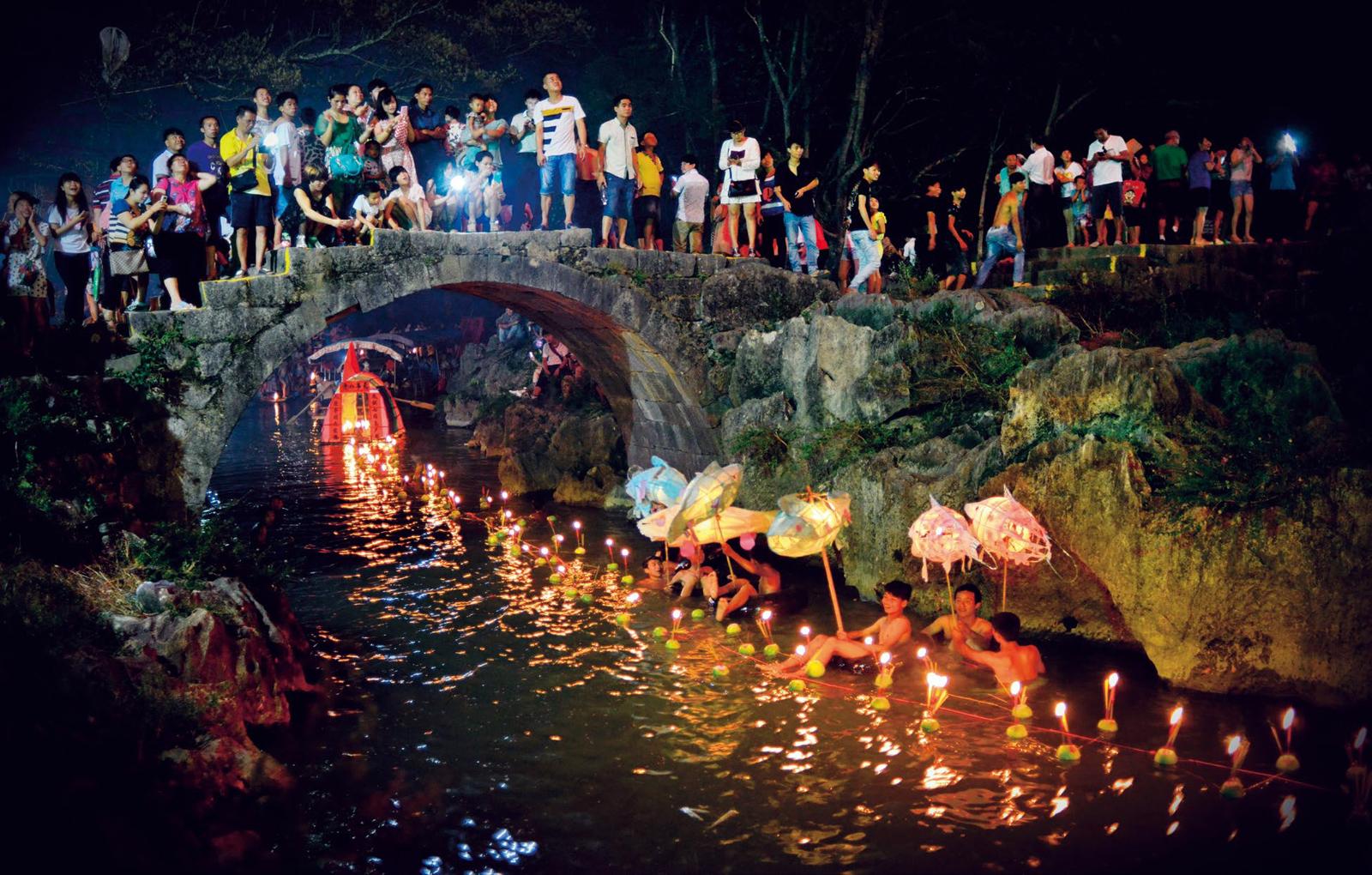Huangyao Grapefruit Lights: Cheerful Occasion After Dark
Publication time:2021-09-30 14:46:00
Written by Zhang Xiaoyan
When it comes to a Chinese festival where lights play a key role, one cannot help but bring to his mind the Lantern Festival which is observed on the fifteenth day of the Chinese New Year, a very romantic day when young people can date in public, but which also marks the end of the fortnight long holiday period and the beginning of routine work. One who knows about western cultures might be also impressed by the Jack-o'-lantern that children play with on Halloween. But the grapefruit lights in Huangyao are quite different and have something interesting behind it.

Interaction with the underwater world
Located in the northeast of Zhaoping County, Hezhou City in south China’s Guangxi Zhuang Autonomous Region, Huangyao, a town with a long history, has around it towering mountains in which there are rocks and stones of different shapes and sizes. The water of the Pearl River, the Yaojiang River and the Xingning River flows through the town. In addition to the Chinese New Year, the Qingming Festival, the Mid-Autumn Festival, festival cultures with local characteristics are observed in Huangyao, which help make the cultural connotation of this well-known historical and cultural town, richer and more varied.
During the reign of Emperor Qianlong of the Qing Dynasty (1736-1795), Huangyao was already a prosperous small market town with a large population and developed commerce, trade and handicraft industry. Converging in the town, the abundant water of the Yaojiang River, the Pearl River and the Xingning River flows into the Guijiang River, and then reaches Wuzhou, Guangzhou, two major industrial and commercial cities along the Pearl River, based in Guangxi and the neighboring Guangdong Province respectively, as well as other important places. The waterway plays a key role in transportation for Huangyao's foreign trade. Since the northwest of Huangyao is high mountains and the birthplace of rivers, floods will come unexpectedly during the rainy season, wash down houses and drown people and livestock from time to time. Local people who are convinced that it is the ghosts in the river that have caused the troubles conduct various sacrificial practices to please them for peace. The 14th day of the 7th month of the lunar calendar every year is the “Ghost Festival” (or Zhongyuan Festival) in China's folk customs. It is said that on this day, Yama or King of Hell opens the prison door and lets out the ghosts so that they can return to the human world for clothing and food. As a result, local people will light incense sticks and candles, burn paper clothes and sprinkle some rice on the ground not far from home, so that ghosts would have something to eat and wear instead of disturbing the people in the house.

To those ghosts and spirits hiding in the river, the people in Huangyao offer their sacrifices in a different way, whereby they insert incense sticks and candles in the grapefruit with the pedicle cut off, which are then floated along the river, after being connected in groups consisting of several pieces each. The local residents believe that the ghosts and spirits in the river will not go ashore if they get people's sacrifice. Once upon a time, with such sacrificing made to the river god, the river did not rise the next year, and no human or animals were drowned, which seemingly confirmed the effectiveness of the practice. Therefore, the practice in which the river gods are offered sacrifices with grapefruit lights on the 14th day of the 7th month of the lunar calendar was recognized locally and it has become more and more ceremonious since it was conducted year after year, developing from an event where a family put grapefruit lamps into river on their own, to an activity for which the people of the whole town pool money to carry out the sacrificial ritual.
Riverside party of the whole town
On the 14th day of the 7th month in the lunar calendar, shortly after dark, the activity of putting grapefruit lights in the river to sacrifice the river god began. The lion dance team and the eight-tone musical band first worship the North God or God of Water that is enshrined at the Xingning Temple, and then pay tribute to the God of Earth at the Jianlong Temple. With these two ceremonies completed, people begin to insert the lit incense sticks and candles into the grapefruit. The starting point of placing the grapefruit lamp is in the section of the Yaojiang River below the Jianlong Temple. Setting off firecrackers gives the signal to floating the grapefruit lamps, along with the drum band, lion dance team, fireworks team that give their performance one after another, who ride on separate bamboo rafts before the long formation of grapefruit lamps led by the headlight raft begins the voyage. The headlight raft which is often decorated with couplets written in Chinese auspicious words is particularly eye-catching under the candlelight. A 40-meter-long fire dragon so formed moves slowly on the water surface of the Yaojiang River, with each grapefruit inserted with an incense stick and a lighted candle. The residents waiting on the bank set off fireworks and firecrackers when the grapefruit lamp raft come in sight, which makes a very lively scene bustling with noise and excitement. The journey ends when the train of lights comes to the Xianshan Temple, where people on the shore will jump into the water and take the grapefruit home. In case of many people in the water, there will be competition. The local custom is that the grapefruit you grab can be taken home for consumption, which has the function of eliminating diseases and disasters. After that, the lion dance team and the eight-tone musical band will worship the North God once again at the Xingning Temple before the crowd breaks up, which signifies the end of the grand riverside party.

As a folk activity of offering sacrifices to the river god by the residents of Huangyao ancient town, the grapefruit lantern on the Zhongyuan Festival has obvious continuity and stability in the inheritance content and form. In the 21st century, with social progress, great development of productive forces and unprecedented improvement of scientific and technological level, putting grapefruit lights has changed from a sacrifice offering to the river god done by individuals to an public entertainment activity. In recent years, as Huangyao has become a famous scenic spot in China, the activity of grapefruit lights has also increased in size and influence accordingly. For example, the local characteristic eight-tone drum music (played with the Chinese traditional musical instruments like suona horn, gongs and drums) and lion dance activities are added to the conventional lamp floating, making the folk activity of grapefruit lamp in Huangyao ancient town a viewing pleasure and more entertaining. In May 2010, Huangyao Lights Festival was selected into the third batch of intangible cultural heritage list of Guangxi.

